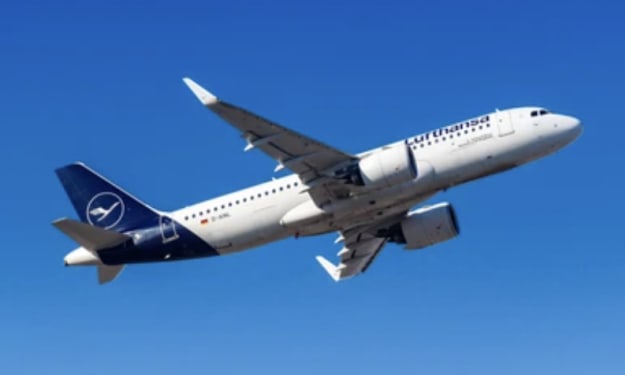IRAN VS USA (theoretical military battle)
By Ajay Abraham

A long-standing confrontation appears to be reaching its climax in 2022, as the United States and Iran find themselves on the brink of war. Despite facing severe sanctions for years, Iran has managed to secure the 14th rank among the world's top militaries. However, it now faces the formidable United States, the world's number one military power and sole global superpower.
In assessing the two sides, it is important to consider their respective strengths and how a potential conflict between them would unfold. While it is unlikely that a war between Iran and the United States would escalate to the point of requiring full mobilization of the American population, Iran may find it necessary to do so due to its smaller size. Nonetheless, the United States has a clear advantage with a population of 335 million compared to Iran's 86 million, representing a significant difference of 249 million more Americans than Iranians.
When it comes to manpower, the United States could potentially call upon 147 million individuals for military service, although only 122 million of them meet the physical and mental fitness requirements. On the other hand, Iran has a manpower pool of 48 million, with only 40 million considered fit for service. In a prolonged war scenario, the ability to quickly replenish losses becomes crucial, and the United States holds the upper hand with 4.3 million teenagers reaching military age annually, compared to Iran's 1.3 million.
Currently, the United States possesses the world's third-largest active-duty military, with a force of 1.39 million personnel, while Iran has 575,000 active-duty troops. Reserves play a vital role in replenishing casualties and allowing exhausted troops to recover, and both countries have relatively evenly matched reserves: the US has 442,000 reservists compared to Iran's 350,000.
Iran's large number of reservists is primarily due to compulsory military service for all males upon reaching adulthood. As a result, the Iranian active-duty military consists mainly of conscripts with limited professional training. Most Iranian soldiers have little experience handling modern weaponry and are often equipped with outdated equipment from the Cold War era. In contrast, the US military maintains a rigorous year-round training cycle, conducting frequent exercises to enhance readiness. The US Navy's RIMPAC exercise, involving numerous partner nations, is a prominent example of such large-scale training events.
Conscripts typically perform poorly against professional volunteer forces, and Iran's conscripts receive limited valuable training during their two-year service. In contrast, the United States' professionally trained warfighters benefit from comprehensive and ongoing training. This stark difference in training quality gives the United States a significant advantage over Iran in terms of combat effectiveness.
The effectiveness of a military also relies on its equipment, which comes at a considerable cost. Iran allocates an annual budget of $5 billion for its military, but it also engages in undisclosed military-related activities within its sphere of influence. In comparison, the United States maintains a massive defense budget of $770 billion, dwarfing Iran's annual spending.
In terms of military hardware, Iran has an air force consisting of 543 planes, while the United States boasts a fleet of 13,247 aircraft. Within Iran's air force, there are 197 fighter aircraft, whereas the US maintains 1,957 fighters. Notably, Iran still operates a fleet of F-14 Tomcat fighters, acquired prior to the revolution, with an estimated 40 of them still in service. The United States, however, destroyed all retired Tomcats to prevent Iran from acquiring essential parts for maintenance. As a result, Iran's Tomcat fleet has been gradually diminishing, with only a portion of them fully mission capable.
Armored Personnel Carriers are important for transporting troops safely across the battlefield, and Iran relies on a mix of domestic and foreign models. The most notable is the Boragh, an Iranian-developed APC based on the Russian BTR-60. While it provides basic troop transport capabilities, it lacks the advanced features and protection of the American Bradley Fighting Vehicle, which is the backbone of the US Army's mechanized infantry units. The Bradley boasts powerful weaponry, including a 25mm chain gun and anti-tank missiles, making it a formidable opponent on the ground.
In terms of naval power, the United States possesses the largest and most advanced fleet in the world, with multiple aircraft carriers, submarines, destroyers, and cruisers. Its naval forces are capable of projecting power across the globe, with the ability to launch airstrikes, conduct amphibious operations, and defend against enemy naval threats. In contrast, Iran's navy, while capable within the region, is significantly smaller and less technologically advanced. It relies on a mix of small patrol boats, frigates, and submarines, which would be outmatched by the superior firepower and advanced capabilities of the US Navy.
The asymmetric warfare capabilities of Iran cannot be overlooked, as the nation has invested heavily in developing unconventional warfare tactics and capabilities. This includes a significant ballistic missile arsenal, including medium and long-range missiles capable of striking targets within the region. Iran has also built up a network of proxy forces and militias across the Middle East, such as Hezbollah in Lebanon and various Shia militias in Iraq and Syria, which could pose a threat to US interests and allies in the region.
However, despite Iran's asymmetric capabilities, a direct conventional war between Iran and the United States would heavily favor the United States. The US military possesses superior technology, advanced training, and a vast array of resources, giving it a significant advantage across all domains of warfare. Additionally, the United States has extensive experience in conducting large-scale military operations and has a robust logistics infrastructure to support sustained combat operations.
In any conflict scenario, the outcome would depend on numerous factors, including the objectives, strategies, and tactics employed by both sides, as well as potential involvement from regional and international actors. A full-scale war between Iran and the United States would have severe consequences for both countries and the wider region, likely resulting in significant casualties and infrastructure damage.
It is important to note that war is a complex and unpredictable phenomenon, and the analysis provided here is a broad overview based on the military capabilities and resources of both countries. Real-world conflicts involve numerous other factors, such as diplomacy, politics, economics, and public opinion, which can significantly influence the outcome and determine the overall impact on the involved parties.
About the Creator
Ajay Abraham
My name is Ajay Abraham from New York. I am partnered with the National Joy of America to create stories for the masses to enjoy.
Enjoyed the story? Support the Creator.
Subscribe for free to receive all their stories in your feed. You could also pledge your support or give them a one-off tip, letting them know you appreciate their work.






Comments
There are no comments for this story
Be the first to respond and start the conversation.